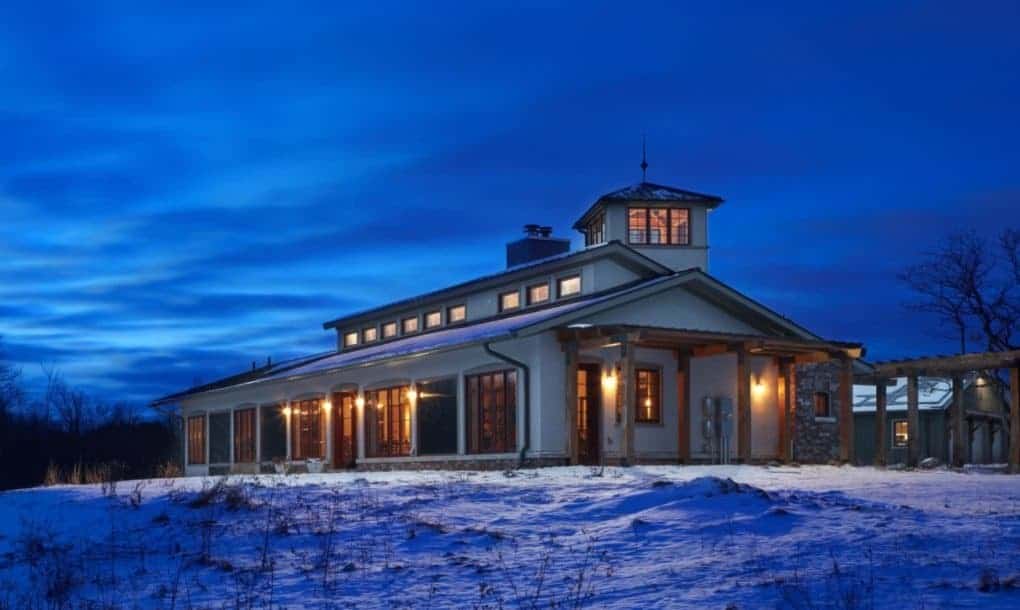A beautiful, 15-acre farmhouse in Ann Arbor, Michigan has been officially recognized as the world’s second Living Building by the International Living Future Institute (ILFI).

Image via ILFI.
The owners, Tom and Marti Burbeck, worked with a team of over 20 designers, engineers, architects, and sustainability experts over the last five years to transform their home from a consumer to a net producer.
The design of Burh Becc, as the building has been christened, was inspired by traditional Tuscan farmsteads, and sports a 2,200 sq ft (204.4 sq m) living space, alongside a 2,400 sq ft barn and workshop. The arable land on the property had been depleted after years of commodity farming and was revamped following the criteria set out by Living Building — using permaculture farming methods and an integrated system of agriculture, horticulture, and ecology.
The approach should create a system that will keep regenerating the soil for decades, maybe even centuries to come. The Burbecks use the farmland to grow their own food and provide produce for the local community.
A building’s life
So, what is a Living Building? Well, according to the ILFI’s website,
Living Buildings are:
• Regenerative buildings that connect occupants to light, air, food, nature, and community.
• Self-sufficient and remain within the resource limits of their site.
• Create a positive impact on the human and natural systems that interact with them.
Burth Becc is a net-zero energy design. It’s equipped with a 16.9-kilowatt solar array which can provide for all the farm’s energy needs and still have some extra to feed back into the grid. Heating is handled by a passive solar system, supported by a tight thermal envelope and a cooling tower, both of which help limit energy expenditure on heating and cooling. During the winter, the home is kept toasty warm through floor heating, supplied by a closed-loop geothermal system.
The Burbecks can also call on a rainwater and snow harvesting system, which makes their home, for all intents and purposes, water net-positive. A rainwater collector feeds non-potable water to huge, 7,500-gallon underground cisterns. Potable water is drawn from an on-site well (necessary to comply with local building codes), but the home is equipped with a potable rainwater filtration system that can be switched on at a moment’s notice.
After more than three and a half years spent on designing their home, 18 months to construct it, and a year of performance auditing, Burh Becc at Beacon Springs Farm became the second building to ever be awarded the Living Building Challenge certification in December 2017. Additionally, the home has been awarded a Platinum LEED Certification.
The Burbecks say the project made sense, considering their lifestyle.
“As we looked at the criteria for LBC certification we thought, why not go for it,” says Marti Burbeck.
“If our goals include helping to change peoples’ relationship with the environment and to change building philosophies, we should start with our own project, and then become advocates.”
The couple now plans to host educational workshops and house tours for members of the community, building industry, officials, and pretty much anyone who’s interested in sustainable living.


